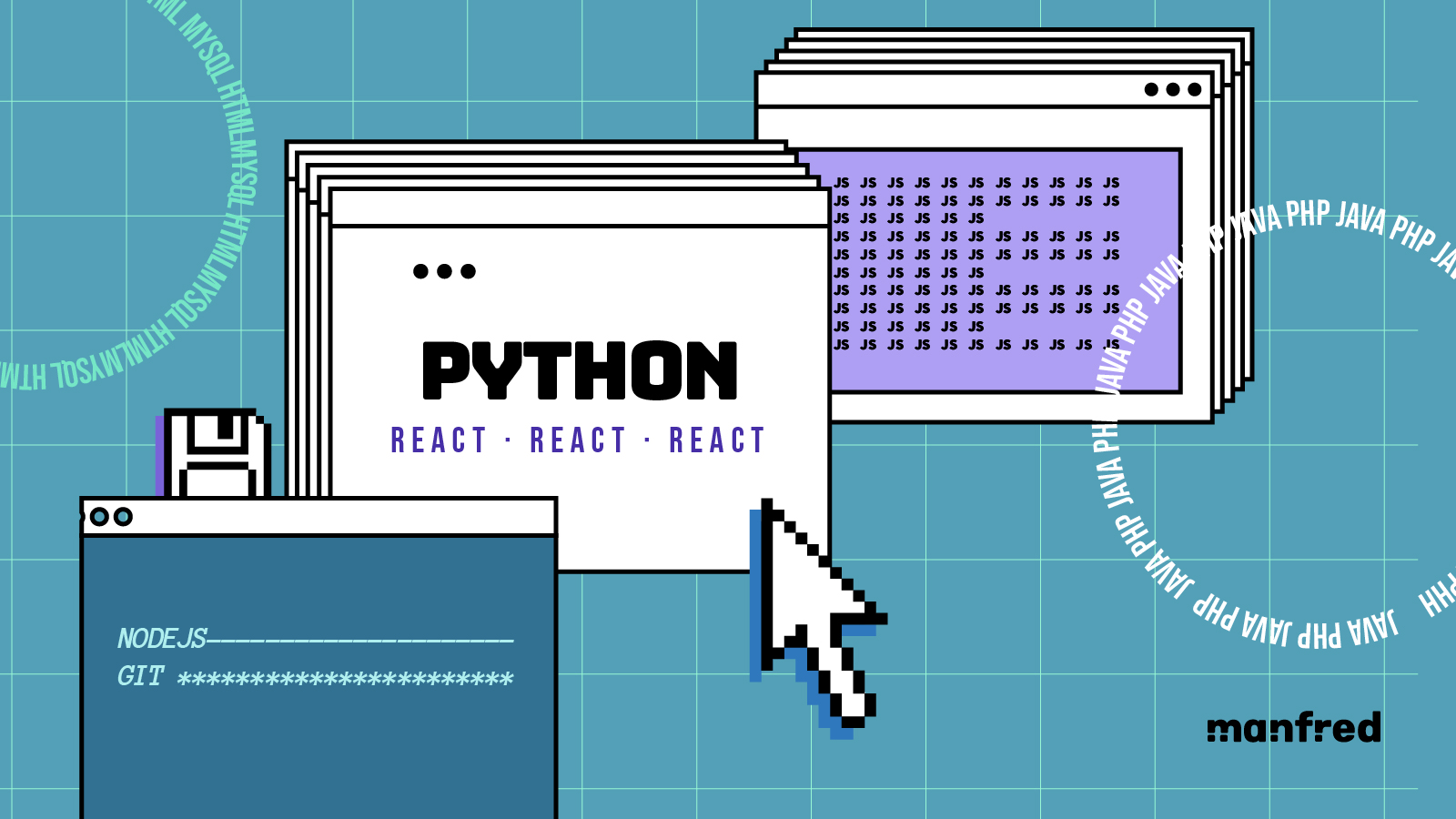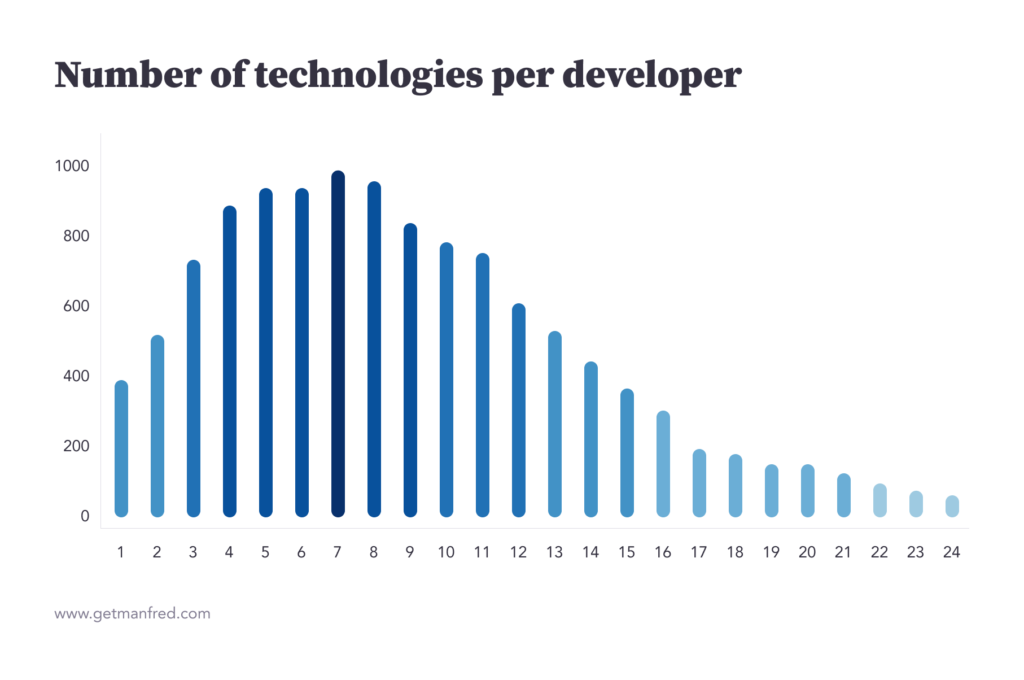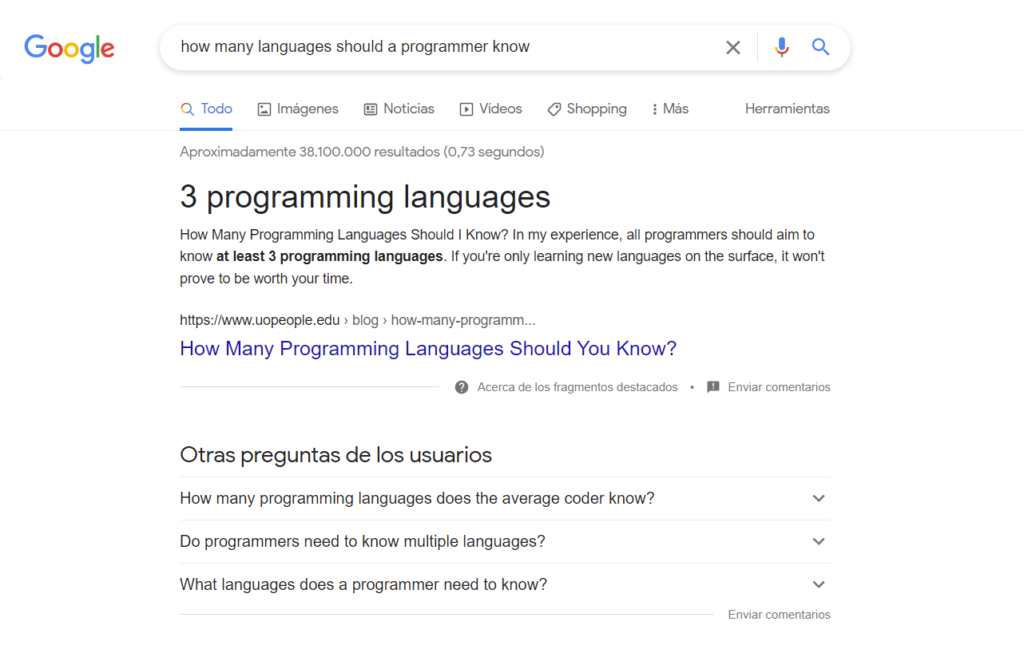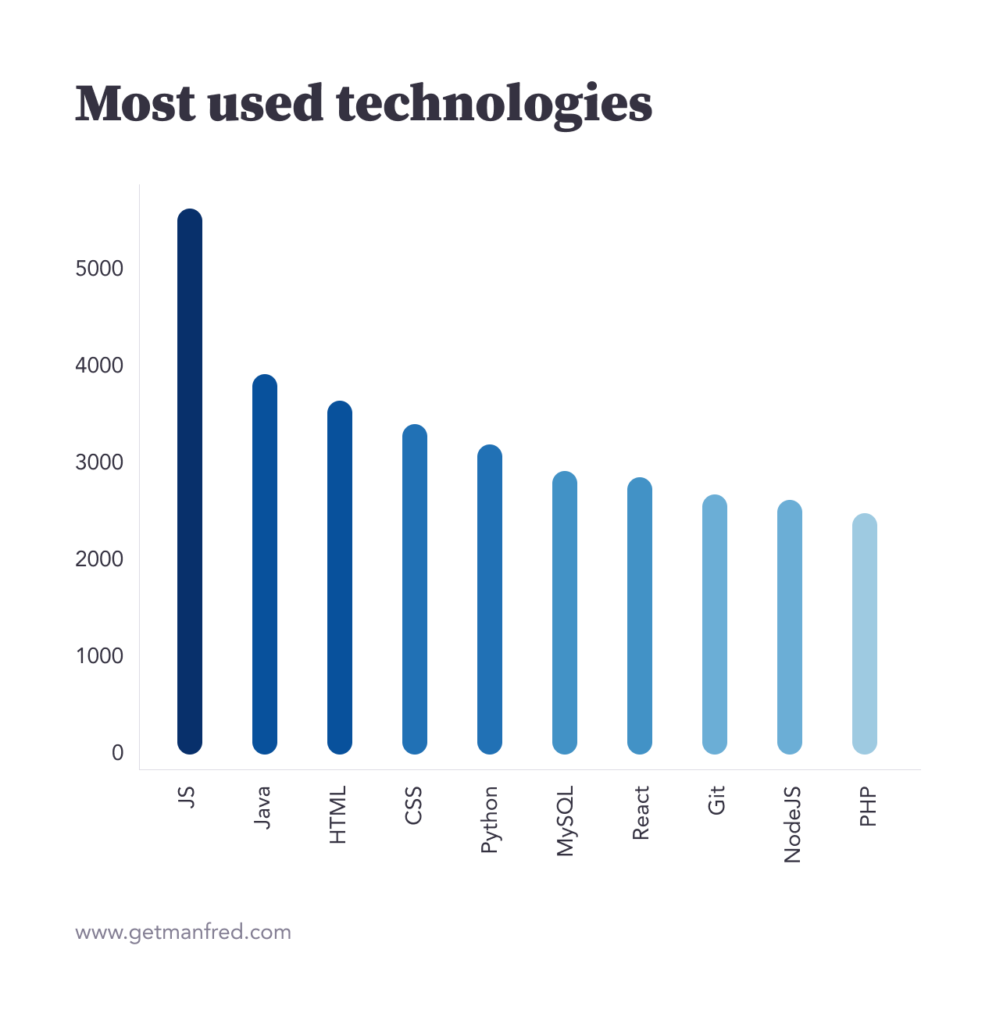How many technologies can a developer can work with

Every day, more and more Manfredites are storing their professional information in our platform for sharing and growing their career. This, besides being great news, gives us a volume of information that, transformed into conclusions, will allow us to draw useful insights… or curious ones.
Not long ago, we started working hand in hand with Sngular's Data & AI team to extract data to help us explain the state of the industry, the behavior of software industry professionals, and their projection in the software industry. Today, we start by answering these questions: How many technologies do developers work with, on average? Which are the most used?
What data is telling us
The graph below represents the number of technologies that Manfred users include in their curriculum.
As we can see, the peak number of technologies controlled per developer is at 7, and we could say that most developers consider that they are fluent in between 4 and 9. However, these figures extend significantly up to 20-24 technologies. And I say significantly because, although visually it may seem a minor representation, the reality is that we are talking about hundreds of people.

What is good, what is bad?
Well… depending on who you ask. Hint: do NEVER ask Google. It’ll give you an absurd answer.

As Galicians we are, our position on this matter is quite clear. It depends. There is no good or bad data. And it depends on so many, many variables… For example, what is your seniority? We think it's unlikely that someone who is just starting out really controls more than 3-5 technologies. However, as you grow professionally, the range is likely to expand.
And it also depends on who and how you are. You can choose between generalism and specialization in any profession, neither of which is better than the other. There will be developers who prefer to focus on one specific stack and go as deep as possible in the other, while others will feel more comfortable touching more areas. This decision is marked not only by you, but also by the sector you work in, the type of company, the size of your team…
What is clear is that labeling someone as a better or worse developer based on such a banal number is, without a doubt, idiotic. It has been a long time since we went beyond the classification of professionals according to a checklist of acronyms and words; and it has come to value their capabilities, good practices... And thank goodness.
A Javascripted world?
Fact in hand, the battle of the titans has a clear winner: the technology that most people work with —or can work with— is JavaScript. We didn't have it either… After all, it encompasses the entire frontend and full-stacker guild, plus a segment of backend developers. What's more, we thought that, perhaps, the difference would be even more overwhelming, if it isn't already. It has practically a 20% advantage over its closest rival: Java.

This isn’t a goodbye
No, it is not, and I will explain why: at Manfred we are just starting to work on data analytics. In a superficial sense, there are many conclusions with simple visualizations that we haven't explored. We will have time to go deeper into not so obvious regressions. That said, this has led us to the approach of a project that we will launch in a few months and that, undoubtedly, we believe will shed much light on the state of the sector. Stay Tuned.

